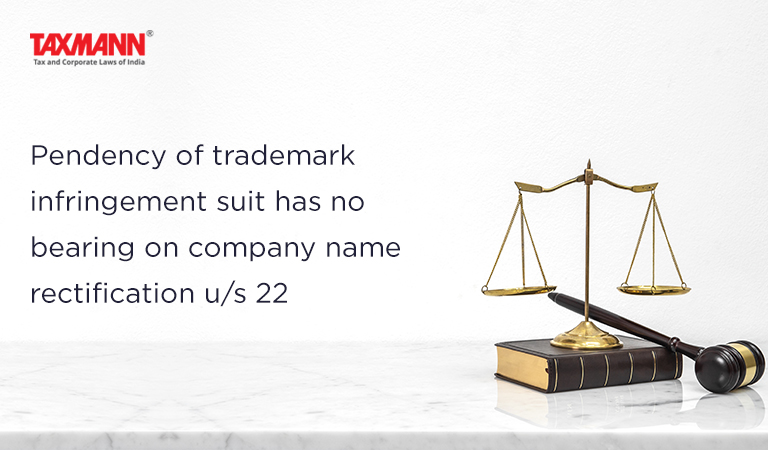Pendency of trademark infringement suit has no bearing on company name rectification u/s 22
- Blog|News|Company Law|
- 2 Min Read
- By Taxmann
- |
- Last Updated on 31 December, 2022
Case Details: Raymond Pharmaceuticals (P.) Ltd. v. Union of India - [2022] 145 taxmann.com 634 (HC-Madras)
Judiciary and Counsel Details
-
- N Sathish Kumar, J.
- N. Viswanathan for the Petitioner.
- T.K. Bhaskar for the Respondent.
Facts of the Case
In the present case, a question was placed before the High Court whether any pendency of the suit for infringement of trade mark is relevant for the action of rectification of the company’s name u/s 22 of the Companies Act, 1956?
Section 22 of the Companies Act, 1956 deals with the ‘rectification of the name of the company’ which are identical with or too nearly resembles the registered trademark of any proprietor under the Trademarks Act, 1999.
Sec 22(1) read as follows
If, through inadvertence or otherwise, a company on its first registration or on its registration by a new name, is registered by a name which,—
(ii) on an application by a registered proprietor of a trade mark, is in the opinion of the Central Government identical with, or too nearly resembles, a registered trade mark of such proprietor under the Trade Marks Act, 1999, such company may change its name
Whereas section 29 of the Trademark Act, 1999 deals with the ‘Infringement of registered trade marks’. Sec 29(1) read as follows –
“A registered trade mark is infringed by a person who, not being a registered proprietor or a person using by way of permitted use, uses in the course of trade, a mark which is identical with, or deceptively similar to, the trade mark in relation to goods or services in respect of which the trade mark is registered and in such manner as to render the use of the mark likely to be taken as being used as a trade mark.”
High Court Held
The High Court observed that section 29 of the Trademarks Act, 1999 deals with infringement relating to goods and services, whereas Section 22 of the Companies Act, 1956 deals with the rectification of the name of the company which are identical with or too nearly resembles the registered trademark of any proprietor under the Trademarks Act, 1999. Thus, the two Acts act in very different fields.
The High Court further observed that what is required to be seen in the Companies Act is whether the trademark is identical with or too nearly resembles a registered trademark. Therefore, the mere assumption of an identical name or name resembles a registered trademark is sufficient to take action u/s 22 of the Companies Act and it is in no way dealt with goods or services.
The High Court held that the mere resemblance of the company’s name to the registered trademark is sufficient for action for rectification of the name u/s 22 of the Companies Act, 1956.
Further, the High Court held that the pendency/outcome of a suit for infringement of trade mark relating to goods or services is irrelevant for action of rectification of the name of the company u/s 22 of the Companies Act, 1956.
Disclaimer: The content/information published on the website is only for general information of the user and shall not be construed as legal advice. While the Taxmann has exercised reasonable efforts to ensure the veracity of information/content published, Taxmann shall be under no liability in any manner whatsoever for incorrect information, if any.

Taxmann Publications has a dedicated in-house Research & Editorial Team. This team consists of a team of Chartered Accountants, Company Secretaries, and Lawyers. This team works under the guidance and supervision of editor-in-chief Mr Rakesh Bhargava.
The Research and Editorial Team is responsible for developing reliable and accurate content for the readers. The team follows the six-sigma approach to achieve the benchmark of zero error in its publications and research platforms. The team ensures that the following publication guidelines are thoroughly followed while developing the content:
- The statutory material is obtained only from the authorized and reliable sources
- All the latest developments in the judicial and legislative fields are covered
- Prepare the analytical write-ups on current, controversial, and important issues to help the readers to understand the concept and its implications
- Every content published by Taxmann is complete, accurate and lucid
- All evidence-based statements are supported with proper reference to Section, Circular No., Notification No. or citations
- The golden rules of grammar, style and consistency are thoroughly followed
- Font and size that’s easy to read and remain consistent across all imprint and digital publications are applied








 CA | CS | CMA
CA | CS | CMA


